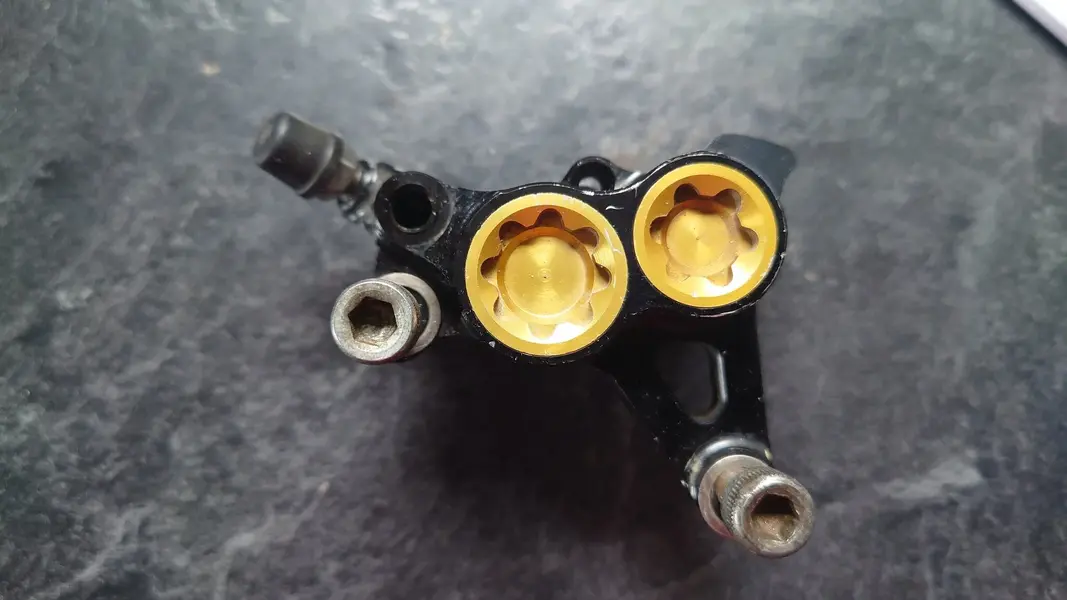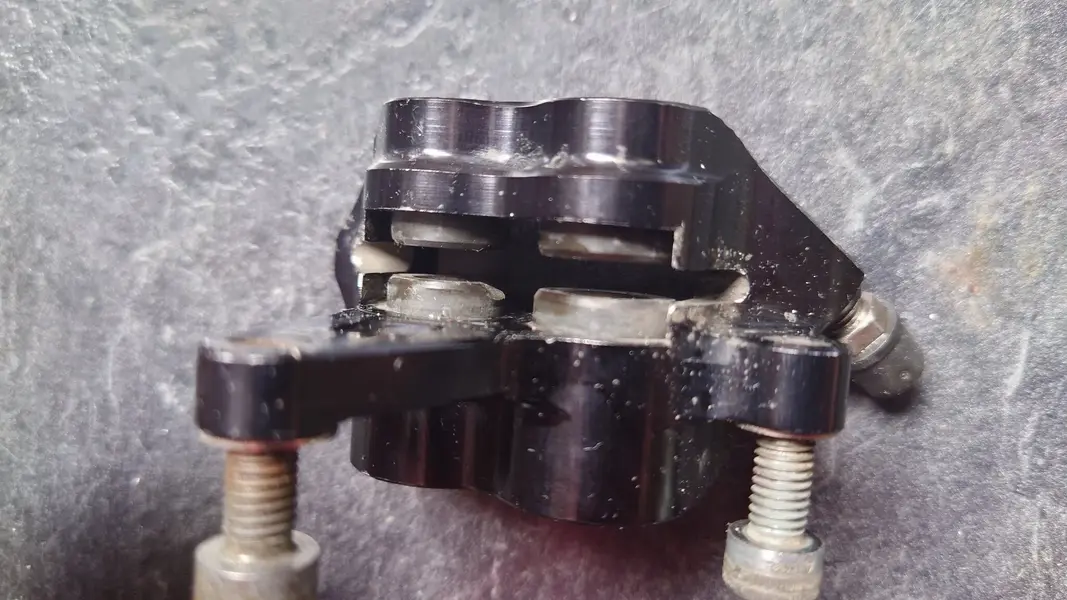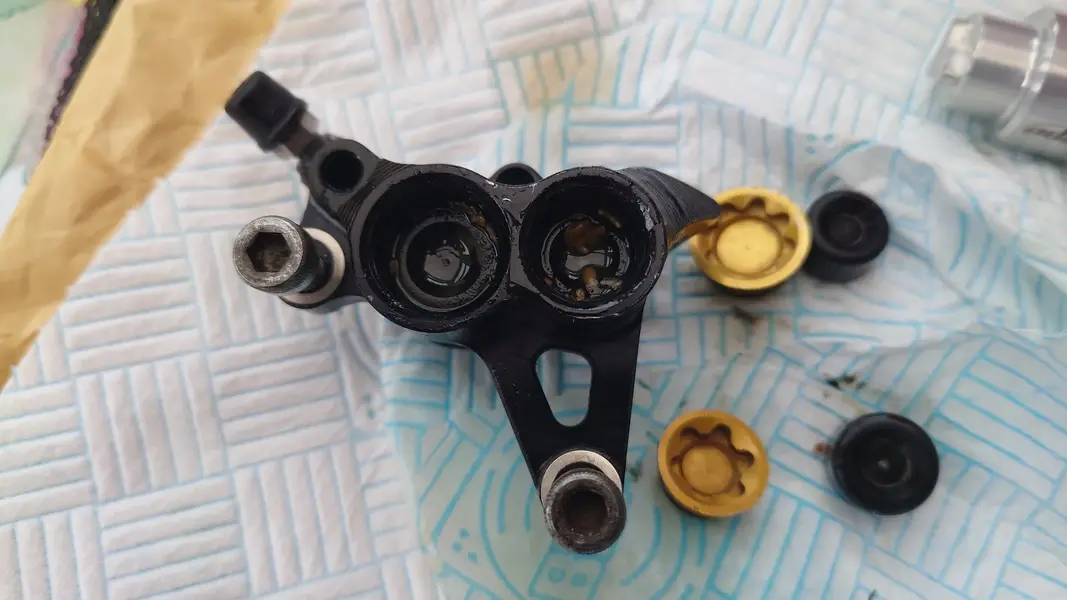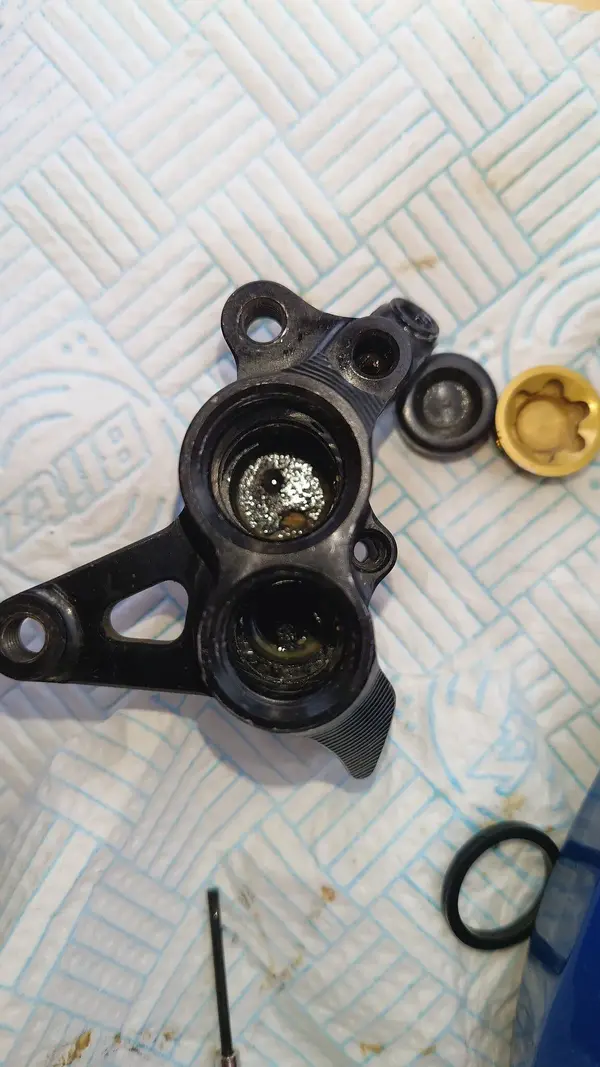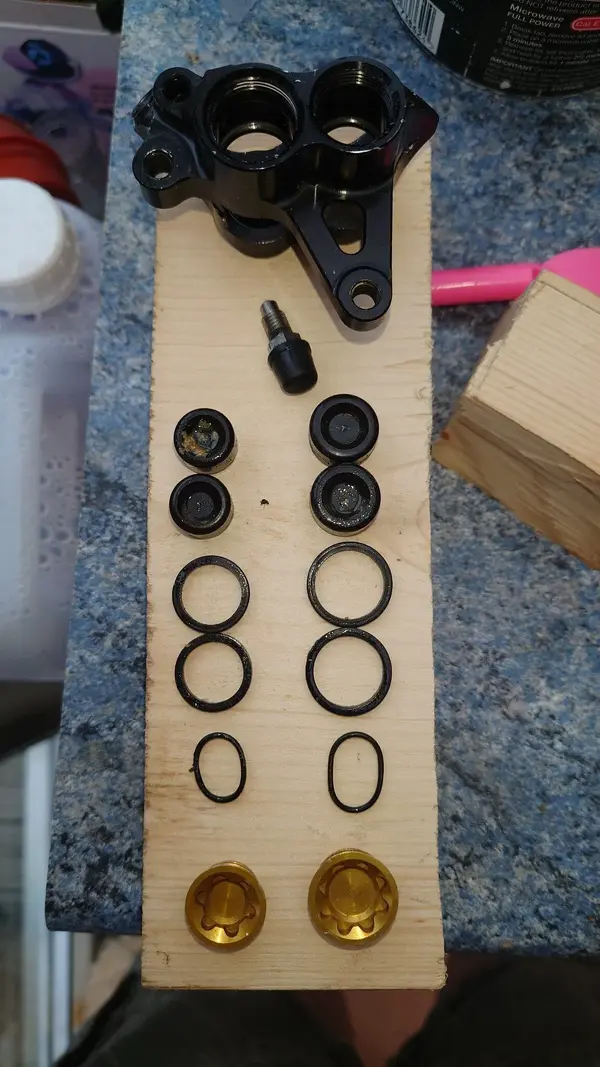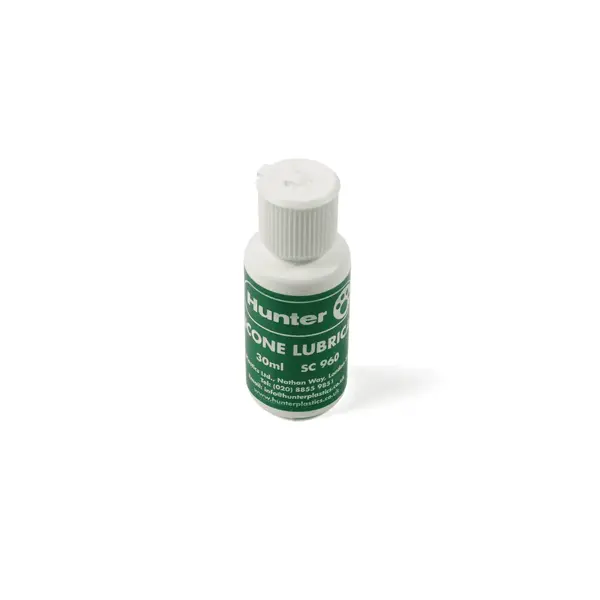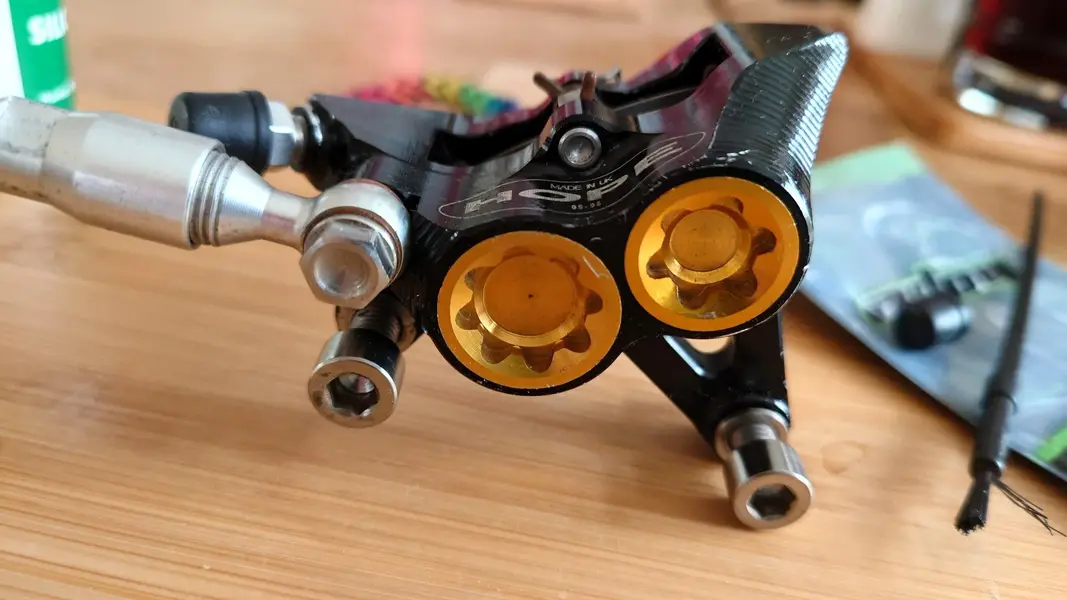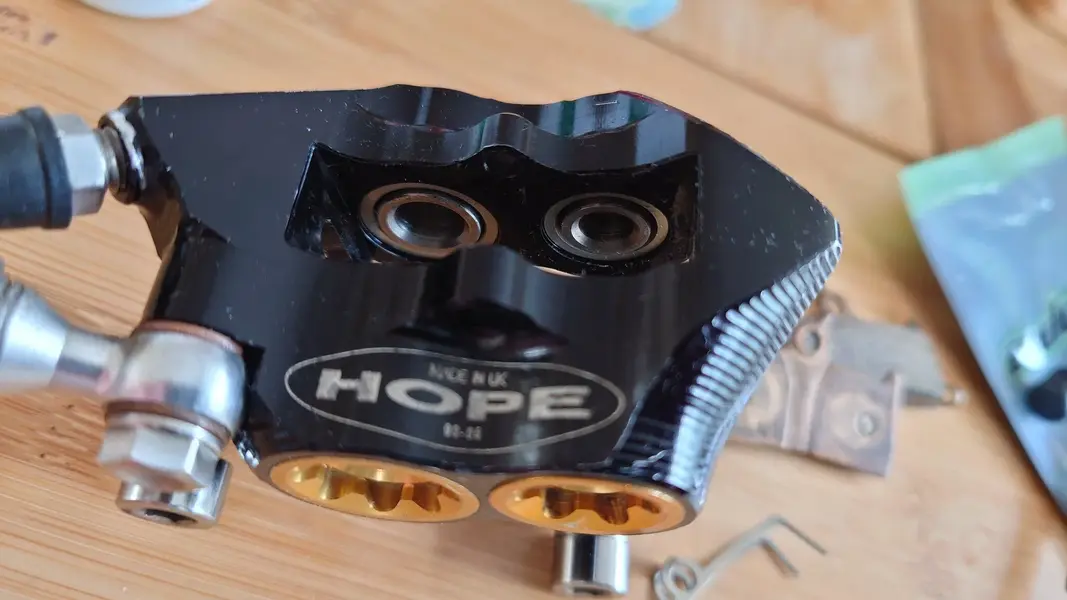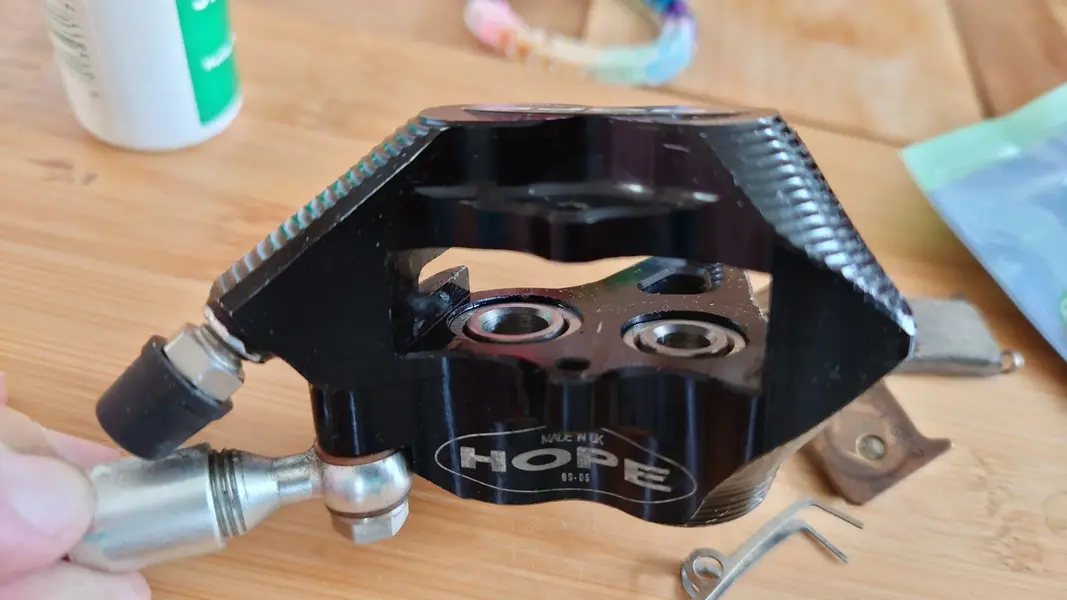To add to what's already been said, if I'm remembering my engineering things from ages ago correctly 6 threads is all you need to get full strength of the connection there. So that hole that has 6 threads in it already, I wouldn't even touch it.
The helicoil thing is different. Yes you're only drilling out a bit past the 6mm thread, but the tap that you run in next (for the helicoil itself) is gonna eat more of the material around the opening this making the walls thinner exactly as you're concerned about. Not ideal situation I think. That said, the wall of the holes in the fork's brake mount is only 3mm thick at most (I have a Jr T of that vintage so I literally just measured it) and that's a casting so it should have less material strength than the billet chunk that Hope used to mill the caliper, yet it's still sufficient for the job it does.
Personally I'd look into how much space I got between the brake's mounting ears and the rotor. If 2-3mm or more I'd be leaving the holes untouched and I'd be running some class 12.9 bolts in from be back of the caliper with sleeve retainer compound (or high-strength thread locker) in the threads of the caliper, then shaving the hex heads down to 1-2mm thickness. This leaves the caliper mounts wall thickness untouched, and provides you with the peace of mind that no matter how hard you tighten the nuts on the outside of the fork you physically can't pull the bolts thru the caliper's semi-strippped holes (can't rip the heads cause 12.9 is high-strength steel, as opposed to the 8.8 regular mild stuff). Yes you'll need to pull the wheel to remove the brake assembly off the fork, but that's hardly a huge deal plus ain't that Super T already QR20 type with the eccentric levers on the bottom?
The helicoil thing is different. Yes you're only drilling out a bit past the 6mm thread, but the tap that you run in next (for the helicoil itself) is gonna eat more of the material around the opening this making the walls thinner exactly as you're concerned about. Not ideal situation I think. That said, the wall of the holes in the fork's brake mount is only 3mm thick at most (I have a Jr T of that vintage so I literally just measured it) and that's a casting so it should have less material strength than the billet chunk that Hope used to mill the caliper, yet it's still sufficient for the job it does.
Personally I'd look into how much space I got between the brake's mounting ears and the rotor. If 2-3mm or more I'd be leaving the holes untouched and I'd be running some class 12.9 bolts in from be back of the caliper with sleeve retainer compound (or high-strength thread locker) in the threads of the caliper, then shaving the hex heads down to 1-2mm thickness. This leaves the caliper mounts wall thickness untouched, and provides you with the peace of mind that no matter how hard you tighten the nuts on the outside of the fork you physically can't pull the bolts thru the caliper's semi-strippped holes (can't rip the heads cause 12.9 is high-strength steel, as opposed to the 8.8 regular mild stuff). Yes you'll need to pull the wheel to remove the brake assembly off the fork, but that's hardly a huge deal plus ain't that Super T already QR20 type with the eccentric levers on the bottom?
